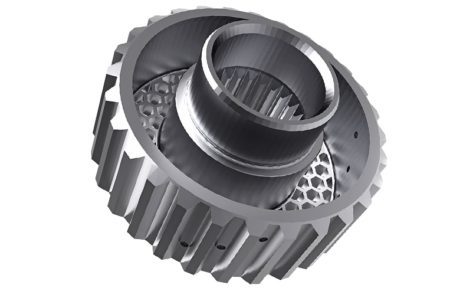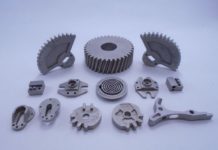I think it is not an exaggeration affirming that today we are in the middle of a cyclone, if one can say so, called “additive manufacturing”. This means we are living a phase of great expansion of these technologies, able to shape objects otherwise unfeasible with conventional subtractive processes and, just for this reason, of relevant interest in several industrial sectors, mainly those with highest technological content.
This is valid for polymeric materials, the first that have lived such expansion, also due to the lower cost of the machines needed and of the processes used, and for metals, where we can see the major advantages connected with that kind of production. Thanks to the diffusion of these technologies, in fact, issues that in the past were considered of high theoretical interest but with few concrete possibilities of practical and industrial applications have now become appealing from the applicative point of view, permitting to develop light and more performing design solutions. I am referring, for instance, to topological optimization techniques, through which it is possible to optimize the geometry of elements once set one or more targets but analogue concepts can be applied to other aspects of the project or the manufacture.
To tell the truth, there is not much new in all that. The technological processes used for the additive manufacturing were known the day before yesterday! The difference is that before they were considered means for the “rapid prototyping”; in other words, tools to make prototypes in short times, useful in the project development phase as able to guide engineers rapidly towards the best design choice. With all structural and functional limits of prototypes.
The question changes and becomes complicated when production is at stake, with all performance, quality and reliability requisites it implies.
Setting aside the so-called makers, or advanced craftsmen, who would deserve a separate discussion, and just taking more distinctly industrial ambits into account, such aspects intertwine and become critical points.
Naturally, because performances are strongly influenced by the micro-structural characteristics and the defects of the material while quality is linked with the repeatability of the micro-structural characteristics of the material. The same for reliability.
At the same time, we have scarce knowledge of how micro-structure and properties are influenced by the several factors that condition the different additive processes. Leaving the powder of an alloy in atmosphere (even controlled), for instance, means witnessing its composition change in time, because some elements can evaporate: this, obviously, will cause different properties depending on the powder age. Moreover, we can wonder what implies, in terms of residual stresses, changing the deposition sequence. And what about defects? What are the heat and/or mechanical treatments that can be used to improve and to uniform the behaviour of the piece so obtained? They are all aspects of great importance and they will play a fundamental role in determining the success or the failure of a technology.
In other words, we feel the need of deepening our knowledge and of having at our disposal codes and standards that guarantee and reassure users. It is difficult to think that without these progresses it is possible to diffuse such technologies apart from where requisites are already so severe as to limit their use, at least nowadays.
Desirable are then studies, researches, collaborations and round-robins aimed at gaining better knowledge and awareness of the pros and cons of this way of producing, enabling the additive manufacturing to leave the Research&Development ambit, where today it is mostly confined, and to become a more and more attractive production instrument.




